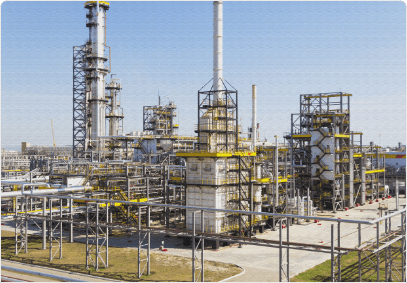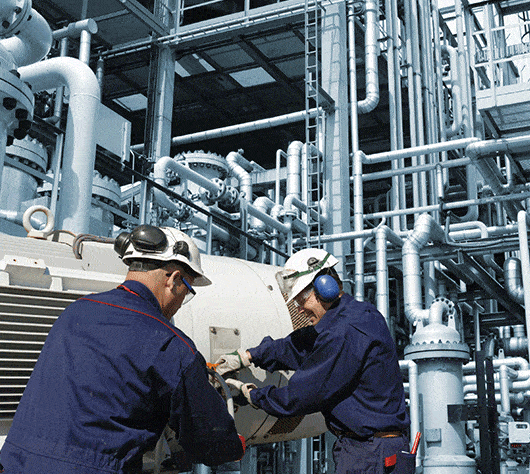How Roar Solutions can Save You Time, Stress, and Money.
Wiki Article
Not known Facts About Roar Solutions
Table of ContentsAll About Roar SolutionsThe Definitive Guide to Roar SolutionsRoar Solutions - An Overview
In order to safeguard installments from a possible explosion an approach of evaluating and identifying a possibly unsafe location is called for. The objective of this is to guarantee the proper option and installation of devices to ultimately protect against a surge and to ensure safety of life.
(https://myspace.com/roarsolutions)
No devices ought to be mounted where the surface temperature level of the devices is above the ignition temperature of the given danger. Below are some typical dust unsafe and their minimum ignition temperature. Coal Dust 380C 225C Polythene 420C (thaws) Methyl Cellulose 420C 320C Starch 460C 435C Flour 490C 340C Sugar 490C 460C Grain Dust 510C 300C Phenolic Material 530C > 450C Aluminium 590C > 450C PVC 700C > 450C Residue 810C 570C The possibility of the danger being existing in a concentration high enough to cause an ignition will certainly vary from area to area.
In order to identify this danger an installation is divided into locations of danger relying on the amount of time the harmful exists. These locations are referred to as Areas. For gases and vapours and dusts and fibers there are three areas. Area 0 Zone 20 A hazardous ambience is very likely to be present and may be existing for extended periods of time (> 1000 hours each year) or perhaps constantly Zone 1 Zone 21 An unsafe ambience is feasible but not likely to be present for long durations of time (> 10 450 C [842 F] A category of T6 means the minimal ignition temperature is > 85 C [185 F] Hazardous area electrical equipment maybe created for usage in higher ambient temperature levels. This would certainly suggested on the rating plate e.g. EExe II C T3 Ta + 60C( This suggests at 60C ambient T3 will certainly not be surpassed) T1 T1, T2, T3, T4, T5, T6 T2 T2, T3, T4, T5, T6 T3 T3, T4, T5, T6 T4 T4, T5, T6 T5 T5, T6 T6 T6 A T Class rating of T1 means the optimum surface area temperature level created by the tool at 40 C is 450 C. Presuming the associated T Class and Temperature score for the equipment are suitable for the area, you can constantly utilize an instrument with a much more rigid Department ranking than needed for the location. There isn't a clear answer to this inquiry. It truly does depend on the sort of devices and what repair work need to be performed. Tools with specific test procedures that can not be performed in the check my site area in order to achieve/maintain 3rd party rating. Have to come back to the factory if it is prior to the tools's service. Area Repair Service By Authorised Worker: Complicated testing may not be needed however certain treatments might require to be complied with in order for the devices to maintain its 3rd party score. Authorized personnel must be employed to carry out the job appropriately Fixing need to be a like for like replacement. New element must be taken into consideration as a direct replacement needing no special screening of the tools after the repair service is complete. Each piece of equipment with a hazardous rating should be examined independently. These are outlined at a high level listed below, but also for more thorough info, please refer directly to the standards.
The Ultimate Guide To Roar Solutions
The devices register is a comprehensive data source of devices documents that includes a minimum collection of fields to recognize each item's location, technological criteria, Ex lover classification, age, and ecological data. The proportion of Comprehensive to Close evaluations will certainly be identified by the Tools Threat, which is assessed based on ignition danger (the chance of a resource of ignition versus the likelihood of a combustible atmosphere )and the unsafe area category( Zone 0, 1, or 2). Implementing a robust Risk-Based Assessment( RBI )approach is crucial for ensuring conformity and safety and security in taking care of Electric Devices in Hazardous Areas( EEHA).
The Of Roar Solutions

In terms of explosive risk, a dangerous area is a setting in which an eruptive environment exists (or may be anticipated to be existing) in quantities that require special safety measures for the building, setup and use of devices. eeha training. In this short article we explore the challenges encountered in the work environment, the risk control actions, and the needed proficiencies to work securely
It issues of modern-day life that we produce, store or take care of an array of gases or liquids that are regarded flammable, and a variety of dusts that are deemed combustible. These substances can, in particular conditions, create explosive ambiences and these can have major and terrible effects. A lot of us are familiar with the fire triangular remove any kind of among the three components and the fire can not happen, however what does this mean in the context of hazardous locations? When breaking this down right into its simplest terms it is basically: a combination of a particular quantity of launch or leakage of a particular material or material, combining with ambient oxygen, and the visibility of a source of ignition.
In many circumstances, we can do little concerning the levels of oxygen in the air, yet we can have substantial influence on resources of ignition, as an example electrical tools. Dangerous locations are recorded on the hazardous area category drawing and are recognized on-site by the triangular "EX-SPOUSE" sign. Here, amongst various other vital information, zones are divided into 3 kinds relying on the threat, the probability and duration that an eruptive environment will certainly exist; Area 0 or 20 is deemed the most dangerous and Area 2 or 22 is deemed the least.
Report this wiki page